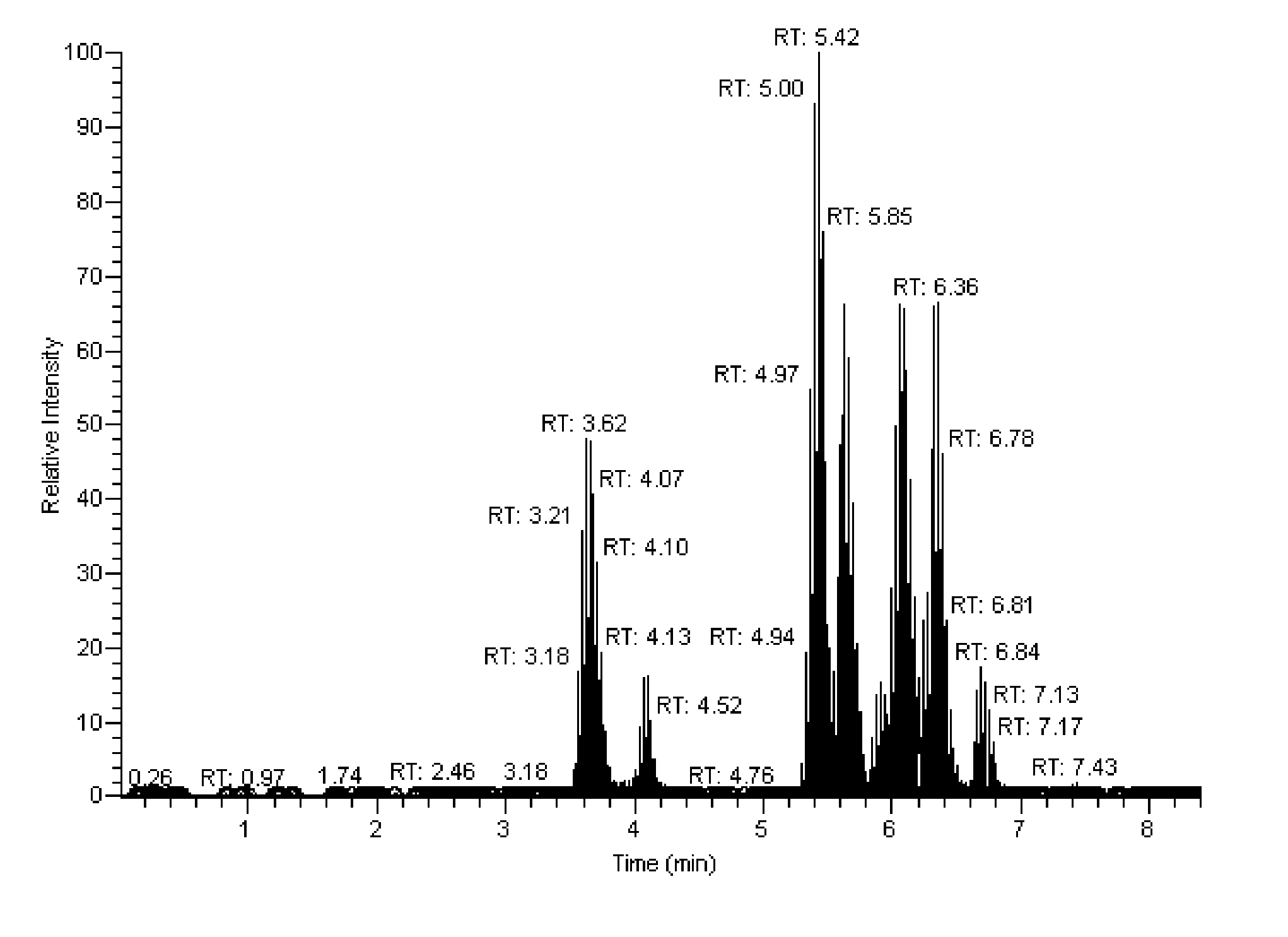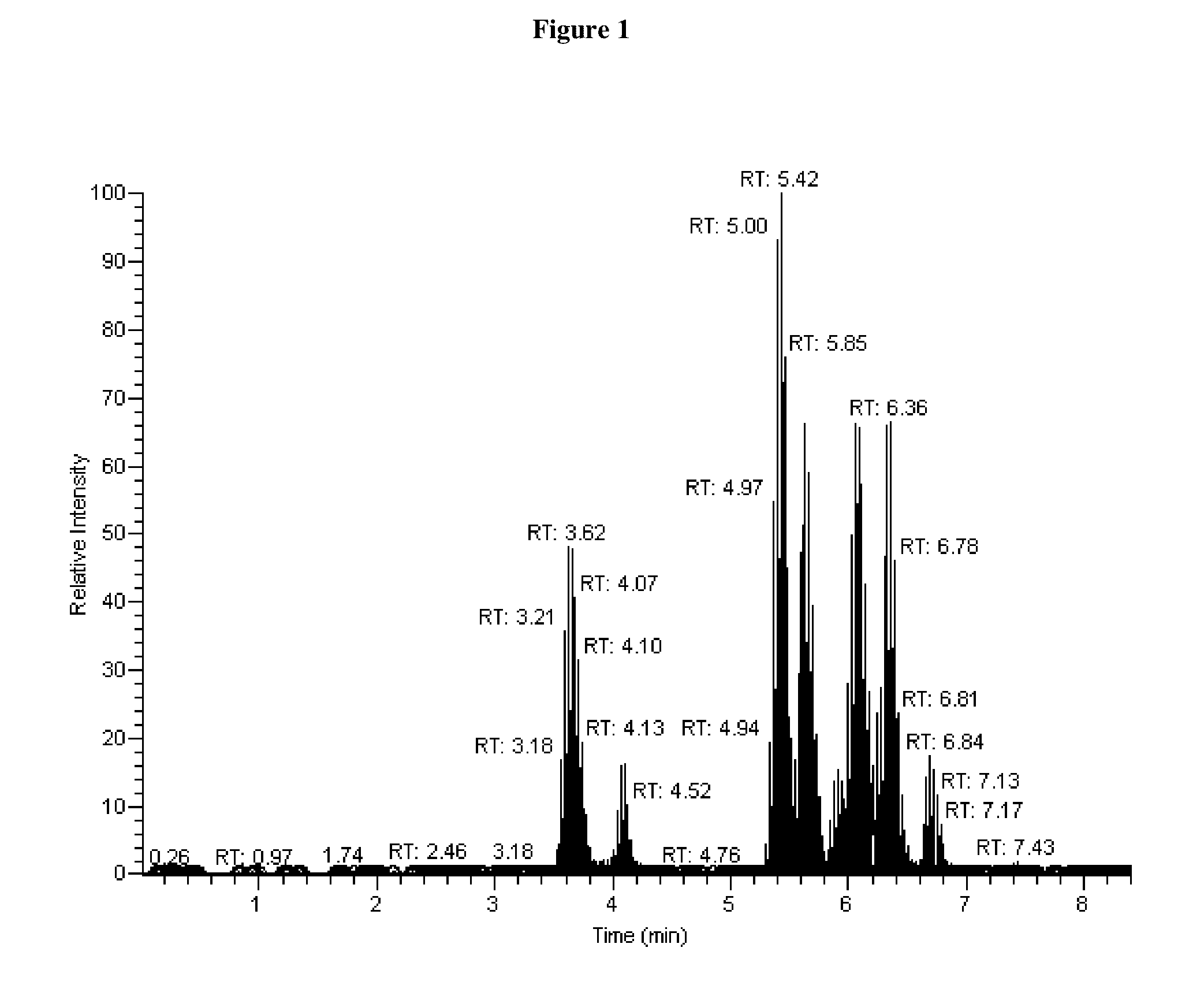Mass spectrometry assay for estrogenic compounds
a mass spectrometry and estrogenic compound technology, applied in the field of methods for measuring certain estrogenic compounds, can solve the problems of link between estrogens and various increased health risks, and achieve the effects of improving solvent removal, reducing dissociation, and saving significant time and expens
- Summary
- Abstract
- Description
- Claims
- Application Information
AI Technical Summary
Benefits of technology
Problems solved by technology
Method used
Image
Examples
example 1
[0111]Blood was collected in a Vacutainer with no additives and allowed to clot 30 minutes at room temperature, 18° to 25° C. Serum was collected for further analysis. Samples that exhibited gross hemolysis and / or lipemia were excluded.
example 2
Extraction of HRT Panel Analytes from Samples Using TFLC-HPLC
[0112]Serum was prepared for LC by pipetting 200 μL of patient serum into a well of a 96-well plate. 25 μL of a combined internal standard solution was added to each well along with 300 μL of 40% ethanol solution. The samples were incubated at room temperature for 30 to 45 minutes prior to LC.
[0113]Liquid chromatography was performed on some samples with a Cohesive Technologies Aria TX-4 HTLC system using Aria OS V 1.5 or newer software. An autosampler wash solution was prepared using 30% acetonitrile, 30% methanol, 30% isopropanol, and 10% acetone (v / v).
[0114]In one example, the HTLC system automatically injected 75 μL of an above prepared sample into a Cyclone P® extraction column from Cohesive Technologies, Inc. (50 μm particle size, 1.0×50 mm). The samples were loaded at a high flow rate to create turbulence inside the extraction column. This turbulence ensured optimized binding of HRT panel analytes to the large parti...
example 3
Extraction of HRT Panel Analytes from Samples Using TFLC-UPLC
[0117]Processed serum samples were alternatively subject to TFLC-UPLC, rather than TFLC-HPLC extraction as described above. In this instance, the HTLC system automatically injected 75 μL of an above processed serum into a Cyclone P® extraction column from Cohesive Technologies, Inc. (50 μm particle size, 1.0×50 mm). The samples were loaded at a high flow rate to create turbulence inside the extraction column. This turbulence ensured optimized binding of HRT panel analytes to the large particles in the column and the passage of residual protein and debris to waste.
[0118]Following loading, the flow direction was reversed and the sample eluted and transferred to either a Hypersil Gold analytical column from ThermoFisher (1.7 μm particle size; 50×2.1 mm) at 260 bar without heat at 0.45 mL / min, or an Acquity BEH C18 analytical column from Waters (1.7 μm particle size; 50×2.1 mm) at 280 bar with heat set at 40°-50° at 0.5 mL / min...
PUM
| Property | Measurement | Unit |
|---|---|---|
| particle diameter | aaaaa | aaaaa |
| diameter | aaaaa | aaaaa |
| diameter | aaaaa | aaaaa |
Abstract
Description
Claims
Application Information
 Login to View More
Login to View More - R&D
- Intellectual Property
- Life Sciences
- Materials
- Tech Scout
- Unparalleled Data Quality
- Higher Quality Content
- 60% Fewer Hallucinations
Browse by: Latest US Patents, China's latest patents, Technical Efficacy Thesaurus, Application Domain, Technology Topic, Popular Technical Reports.
© 2025 PatSnap. All rights reserved.Legal|Privacy policy|Modern Slavery Act Transparency Statement|Sitemap|About US| Contact US: help@patsnap.com



